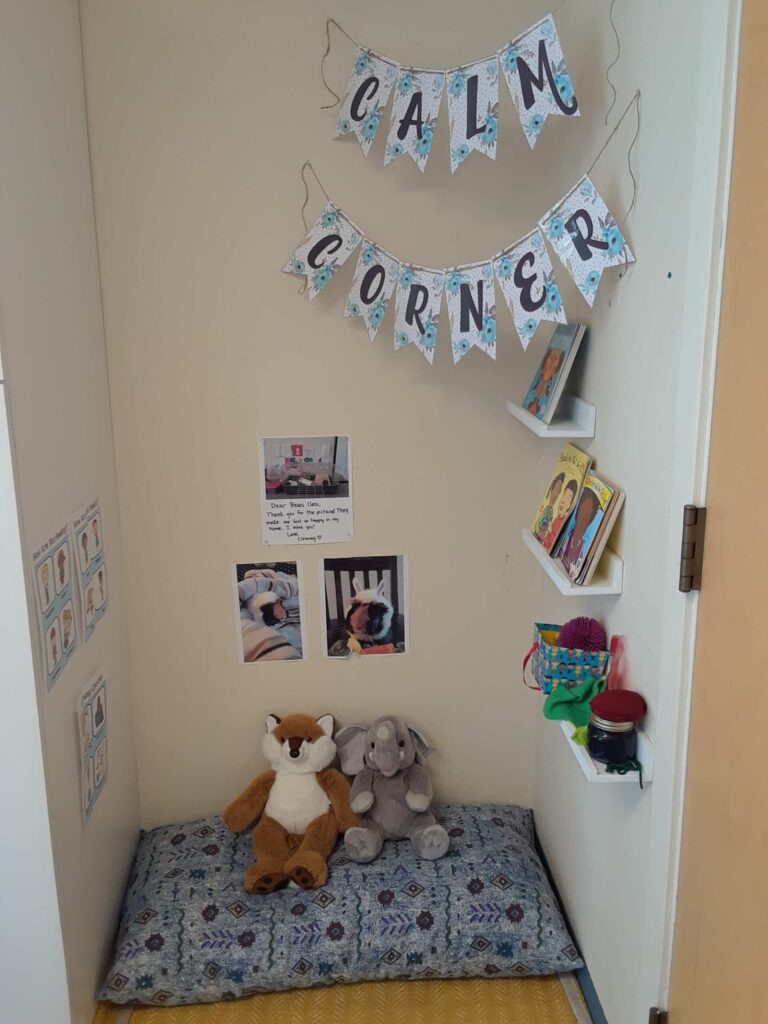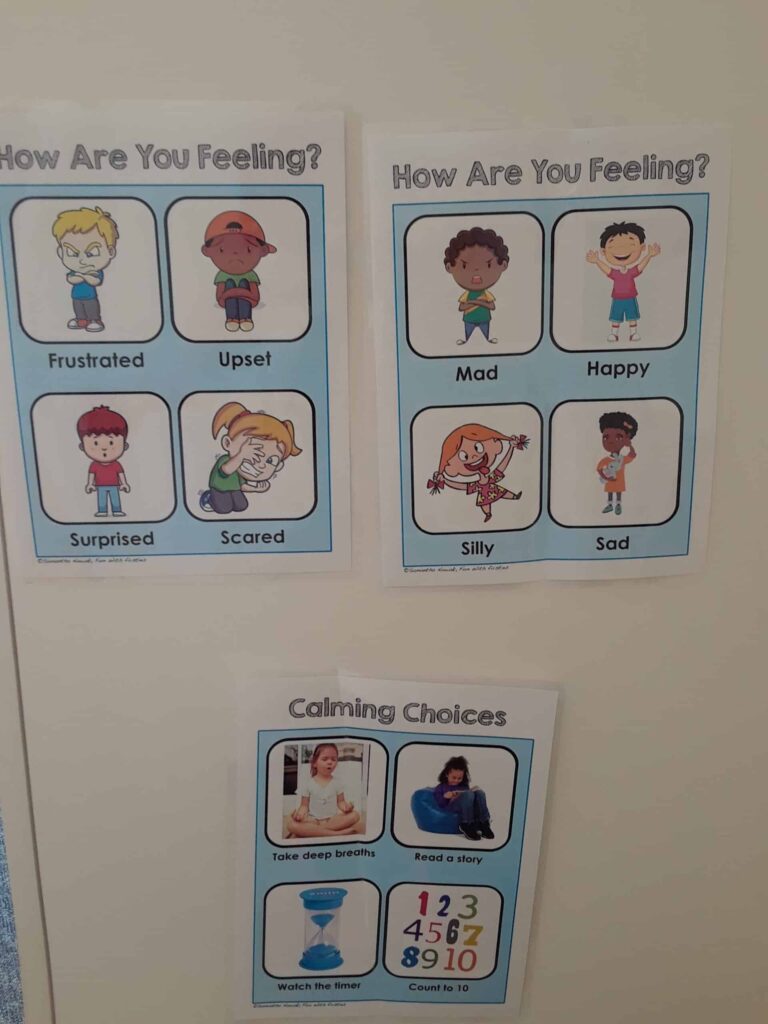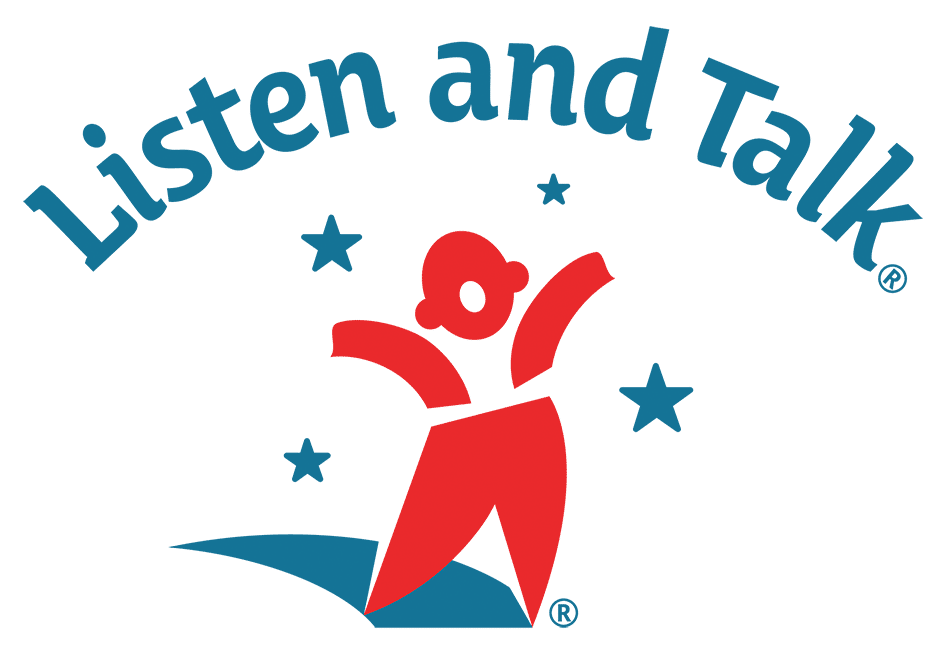How “Calm Corner” Spaces Build Social / Emotional Skills

Emotional recognition and regulation in children is a developing skill that can be addressed through more than just a social-emotional curriculum. Positive discussion surrounding emotions–or “feelings talk”–lets children know that it’s okay to be sensitive, frustrated, mad, or sad. Designated calming spaces both at home and in the classroom help children navigate their emotions, improve upon self-regulatory behavior, and understand peer non-verbal cues.
In the Bears classroom at Listen and Talk, we have, quite frankly, an adorable “calm corner.” Set back from the centralized activity area, it allows students to take a break in a positive environment. A big squishy floor pillow and stuffed animals add comfort. Various sensory toys offer tactile and visual stimulation, including felt pieces, gel beads, a Koosh ball, a glitter jar, and numerous sand timers. Books on emotions and gentle bodies are readily available on small shelves.

One wall of our calm corner has an identification chart of feelings alongside recommended calming techniques such as five finger breaths and counting to 10. And the newest addition to our calm corner is a photo collage of a familiar animal (my guinea pig!) that visited the classroom. In my previous post on Animal Therapy, I talked about the benefits of animal interaction for developing critical life skills in children who are deaf or hard of hearing (D/HH). When my guinea pig’s photos were added to the calm corner, the first two students to use the calm corner that day instantly calmed down when they saw her fluffy face and actually ran their hands over the pictures!
We encourage our students to advocate for themselves when they feel they need to calm down–i.e. de-escalate their emotions when they are heightened. We remind them that problem-solving needs to occur with a calm body, and so they can remove themselves from an upsetting situation until they feel calm enough to return and communicate effectively.
We also remind the children that the calm corner is not for when they are bored, want to get out of an activity, or need a nap! The teachers always make sure to have an eye on students in our calm corner to assess whether or not they are adhering to the calm corner rules. As much as possible, the students are also supposed to ask before heading to the calm corner.
Adding a calm corner to our classroom prompted many of our students’ families to create a calm space in their own homes. Many children thrive on routine and predictability, so any consistency that can be achieved between the home and classroom settings greatly benefits a child’s developmental learning.
Children who are D/HH might have additional sensory or behavior needs. A calm corner can help meet these needs in an inviting manner. But regardless of whether or not a child who is D/HH has additional diagnosed or recognizable needs, all children (and let’s be honest, even most adults) are still learning the complexity of human emotions. A calm corner is a reminder that it’s okay to be emotional, and it’s okay to have your own space if you need it.



